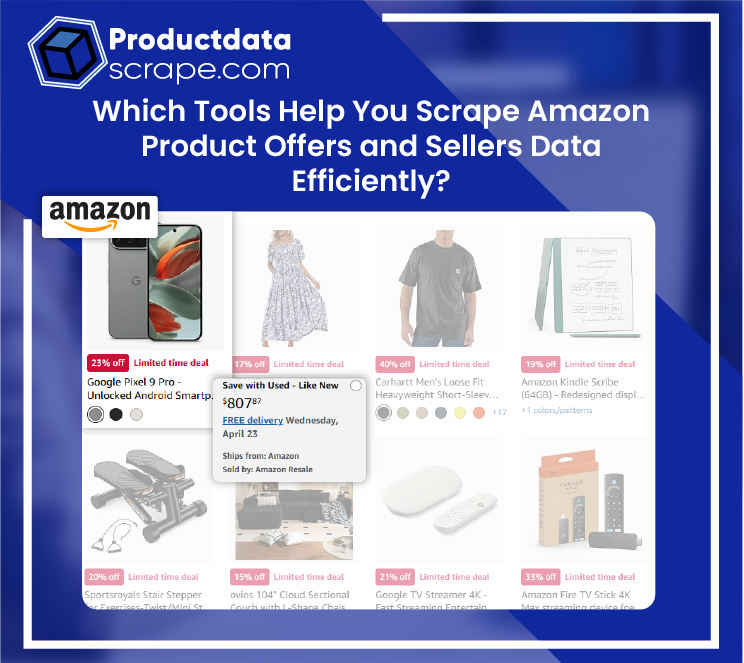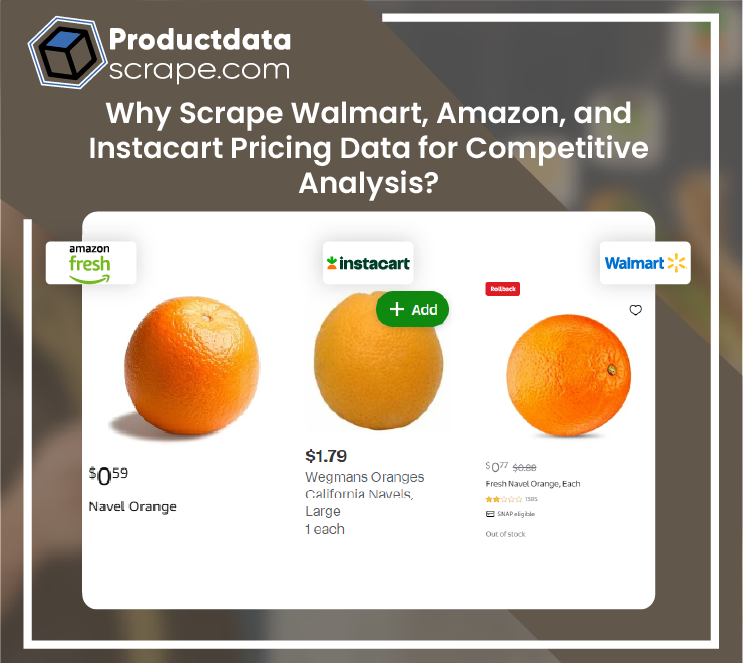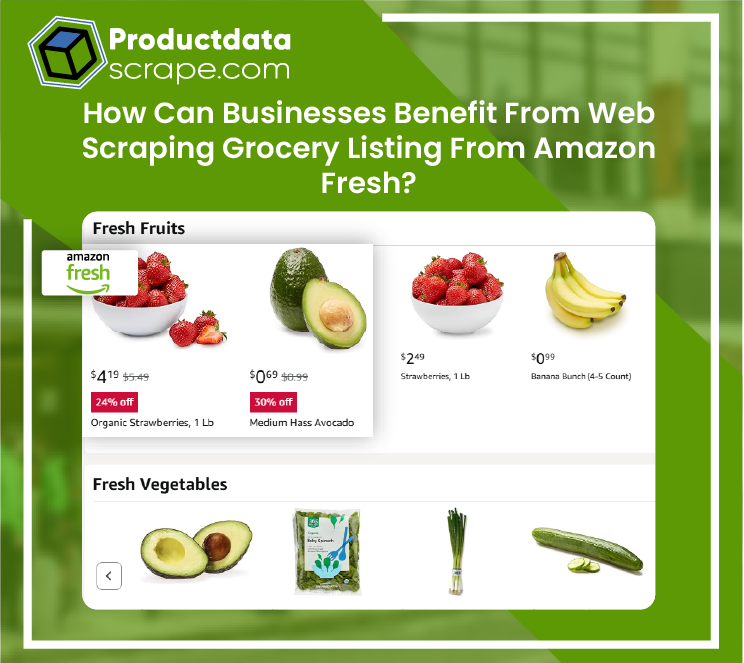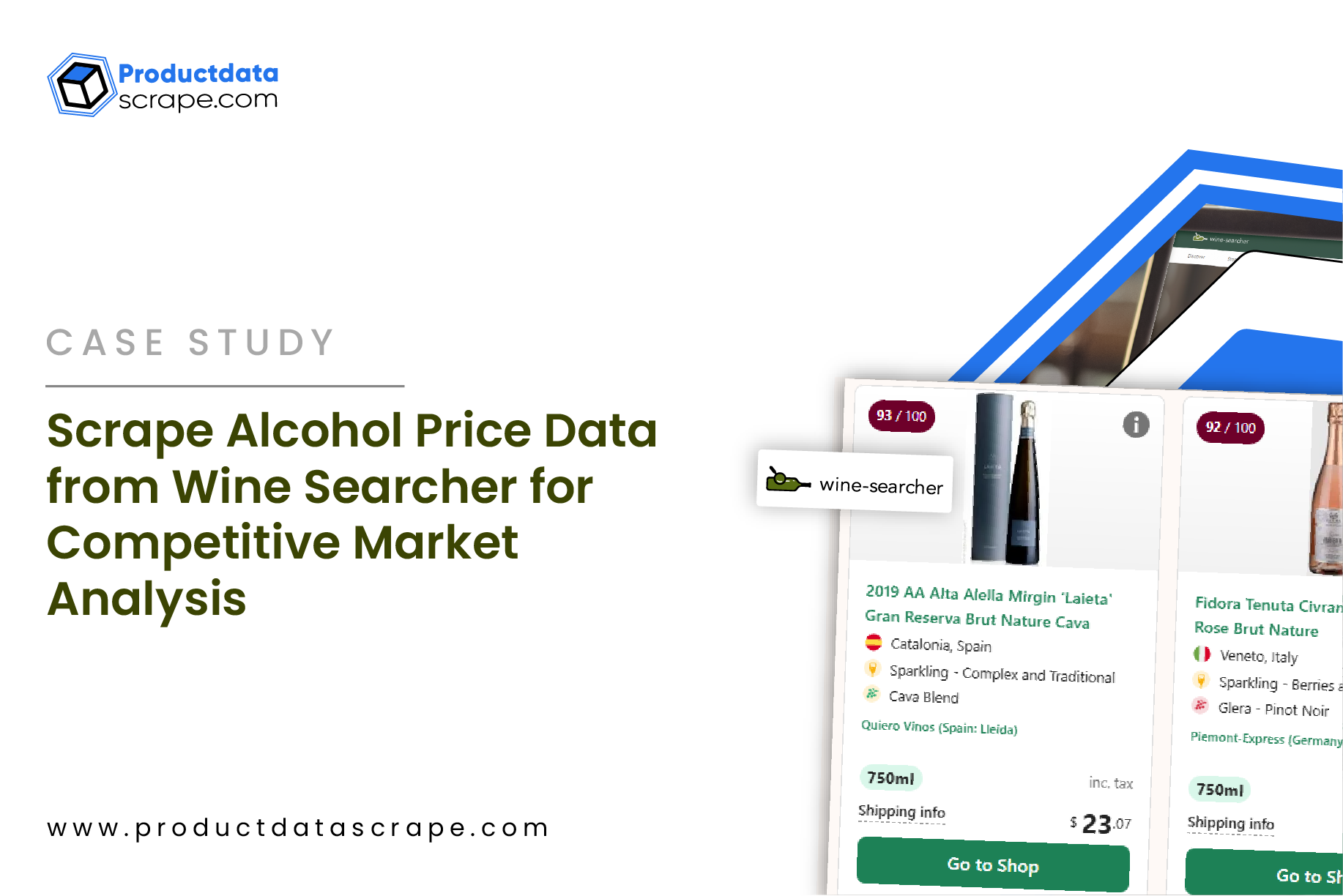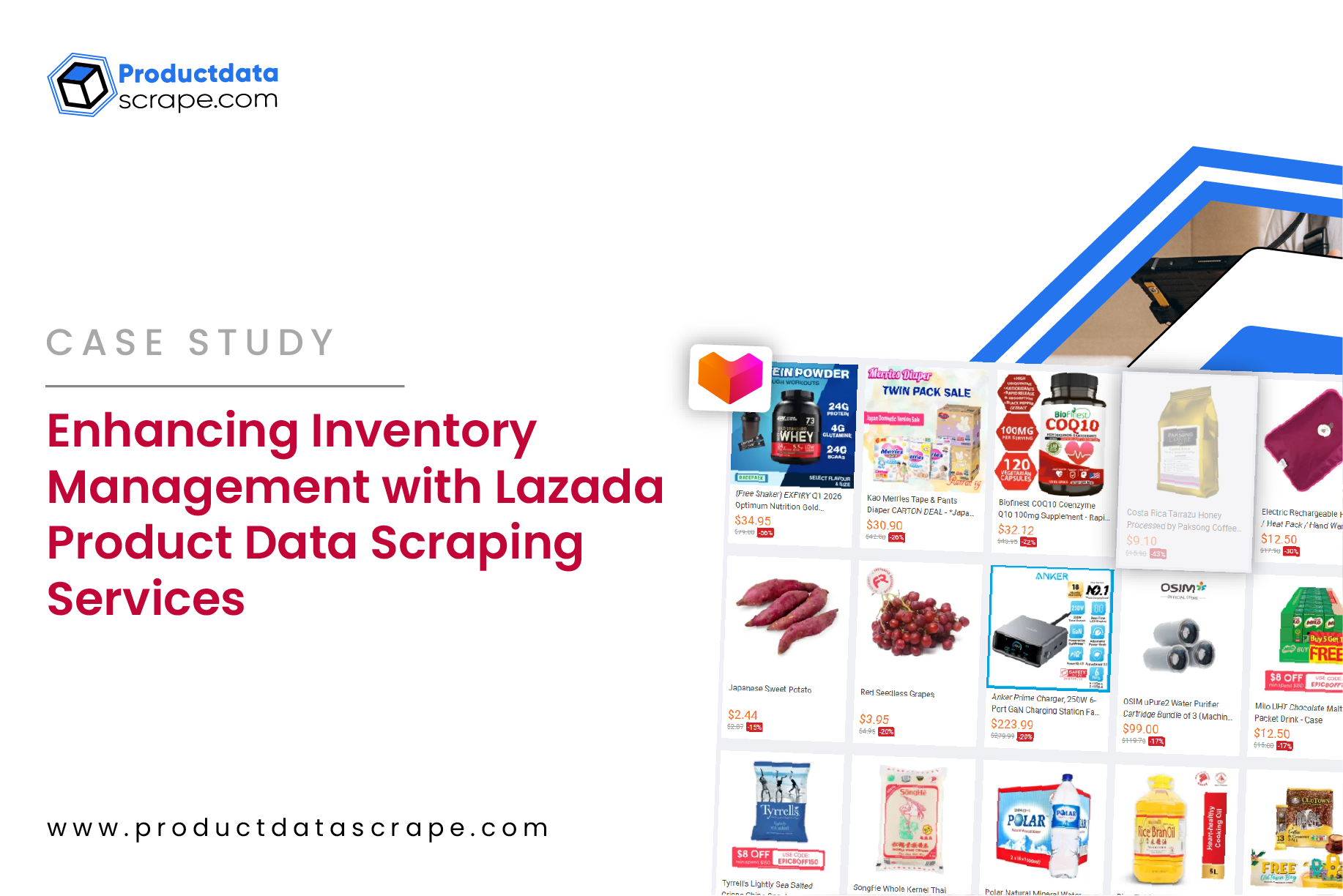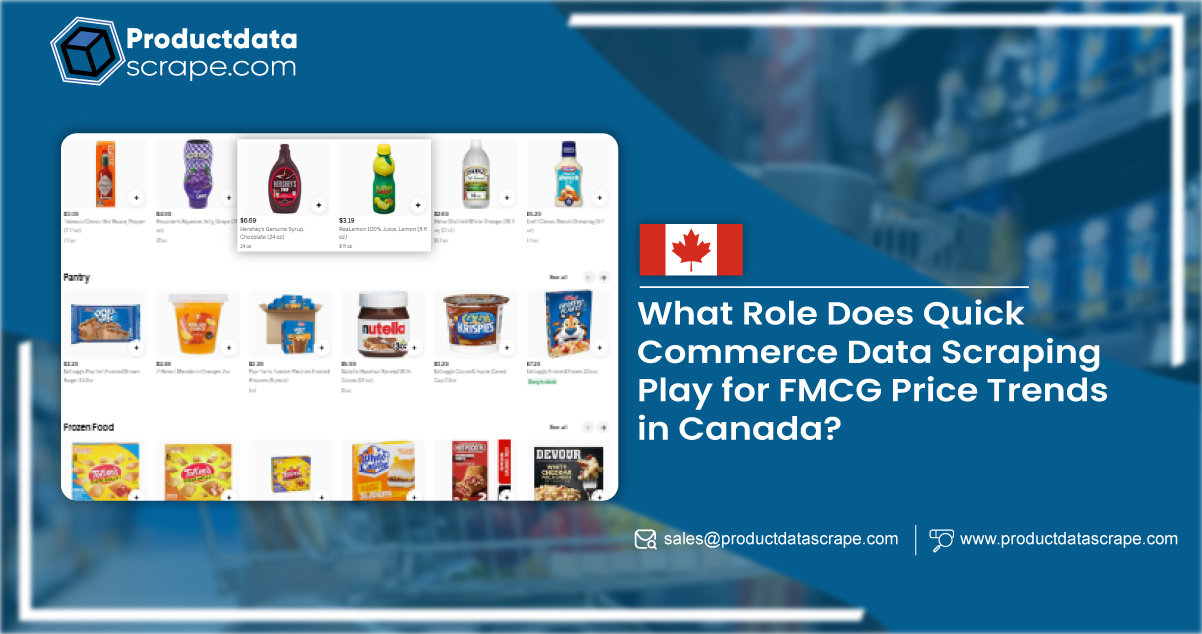
Introduction
The rise of quick commerce (q-commerce) has revolutionized the retail landscape in Canada,
particularly in the Fast-Moving Consumer Goods (FMCG) sector. With increasing consumer
demand for rapid deliveries, online grocery platforms and convenience stores strive to offer
competitive prices and product availability. Businesses, retailers, and analysts rely on Quick
Commerce data scraping for FMCG price trends in Canada to monitor real-time pricing
fluctuations and optimize strategies. By leveraging Quick Commerce data scraping and FMCG
price trends in Canada, companies can make data-driven decisions on pricing, product
placement, and competitive positioning. Extracting pricing insights from Q-commerce platforms
allows businesses to stay ahead of market shifts and enhance profitability. With Quick
Commerce data scraping Canada, brands understand FMCG trends comprehensively, ensuring
they remain competitive in the evolving retail ecosystem. Data-driven insights help businesses
refine their approaches and capitalize on emerging market opportunities.
The Growing Influence of Quick Commerce in Canada
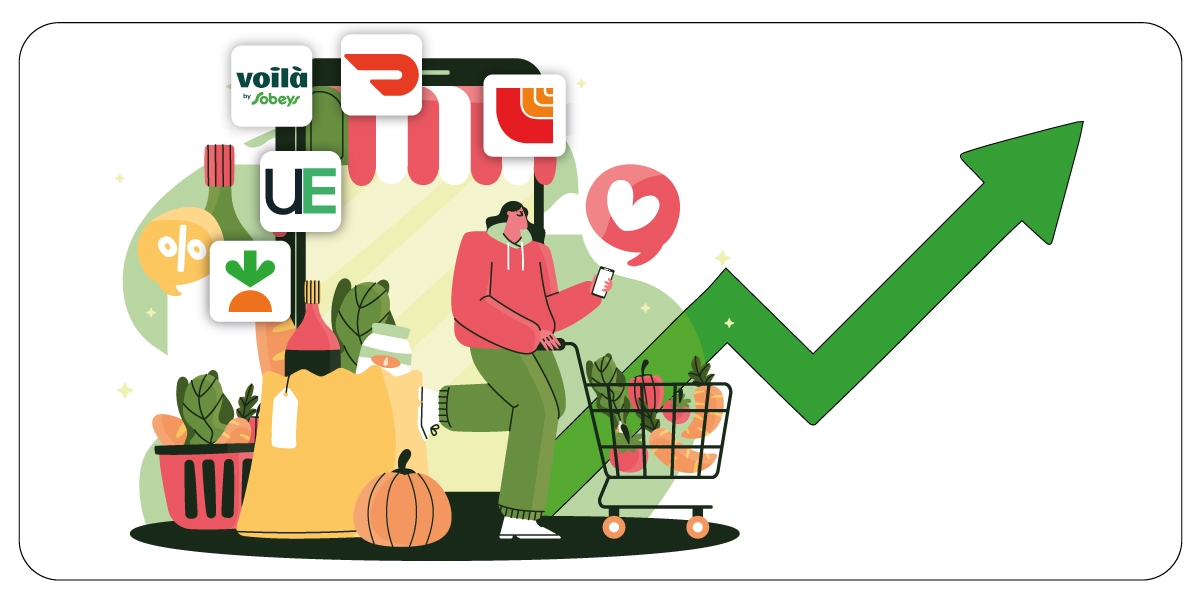
Canada's retail sector is rapidly evolving with the rise of quick commerce (q-commerce), fueled
by changing consumer preferences, technological advancements, and urbanization. Platforms
like Instacart, Uber Eats, DoorDash, Voila by Sobeys, and PC Express by Loblaws are
transforming the market by offering instant access to essential Fast-Moving Consumer Goods
(FMCG). As speed and convenience become top priorities, businesses must adopt data-driven
strategies to maintain competitive pricing.
Traditional pricing models are no longer sufficient in a market where real-time fluctuations
influence consumer decisions. FMCG data extraction Canada enables businesses to track
dynamic pricing trends, predict demand, and optimize strategies. By leveraging Canadian retail
data scraping, retailers gain actionable insights into competitor pricing, product availability, and
market trends. This approach helps businesses stay ahead in the evolving q-commerce
landscape, ensuring they make informed decisions to enhance profitability and improve
customer satisfaction in Canada's fast-paced retail environment.
The Role of Data Scraping in FMCG Price Analysis
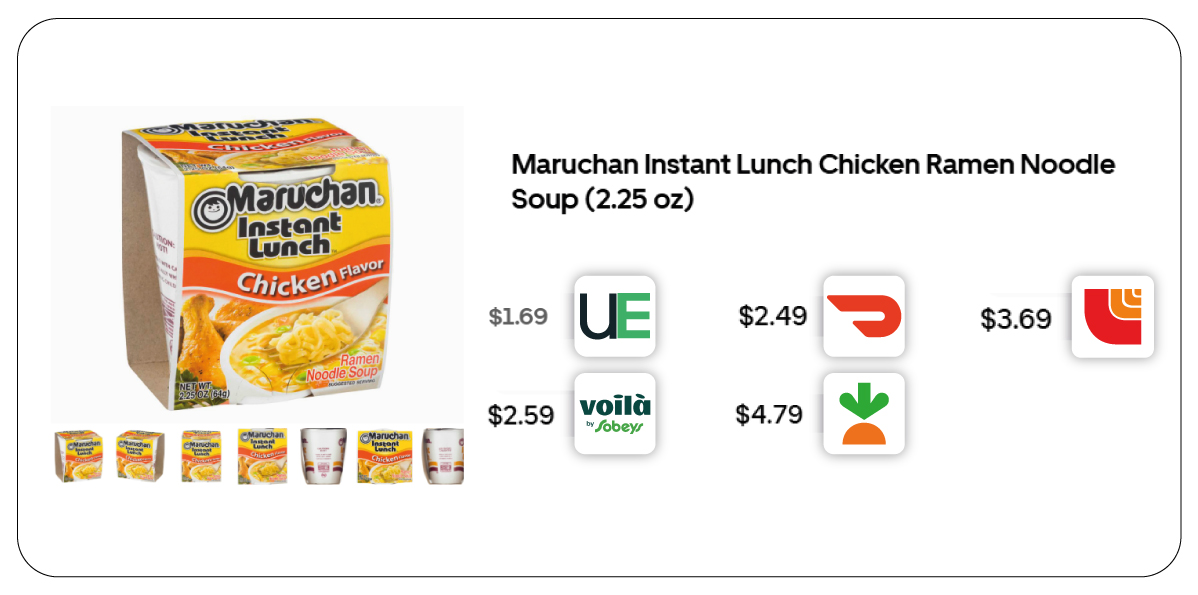
Data or web scraping is crucial in monitoring FMCG price trends across various quick commerce
platforms. Businesses and market analysts extract pricing data from online grocery stores and
food delivery platforms to assess competitive pricing, promotional offers, and demand
patterns. This data-driven approach helps stakeholders achieve the following objectives:
Competitive Price Monitoring: Retailers and FMCG brands must track competitor prices to stay competitive. With e-commerce price intelligence Canada, businesses can access real-time pricing information from multiple platforms, allowing them to adjust their pricing strategies accordingly. By analyzing this data, companies can ensure that their prices remain attractive to consumers while maintaining profitability.
Understanding Promotional Strategies: Promotions and discounts are vital in attracting consumers in the quick commerce sector. Companies frequently run limited-time offers, flash sales, and exclusive discounts to retain customer loyalty. Scraping real-time pricing data Canada enables businesses to analyze promotions' frequency, duration, and impact, helping them develop effective marketing strategies that align with industry trends.
Analyzing Regional Price Variations: Canada's diverse geography and economic landscape contribute to significant price variations across different provinces and cities. Supermarket data scraping Canada provides insights into regional pricing trends, helping businesses tailor their pricing strategies to market segments. For example, the cost of everyday essentials in Toronto might differ from those in Vancouver due to supply chain factors, local demand, and taxation policies.
Identifying Consumer Demand Trends: Online grocery price trends Canada enable businesses to identify emerging consumer trends and preferences. Companies can determine which FMCG products are gaining popularity by analyzing purchasing patterns and price fluctuations. This data is valuable for optimizing inventory management, forecasting demand, and launching new products tailored to consumer needs.
Price Elasticity and Dynamic Pricing Strategies: Understanding price elasticity is essential for FMCG businesses looking to implement dynamic pricing strategies. With the help of FMCG retail data extraction Canada, companies can analyze how price changes affect consumer purchasing behavior. This insight allows businesses to adjust prices dynamically based on demand fluctuations, seasonal trends, and competitor actions.
Challenges in FMCG Price Trend Analysis through Data Scraping
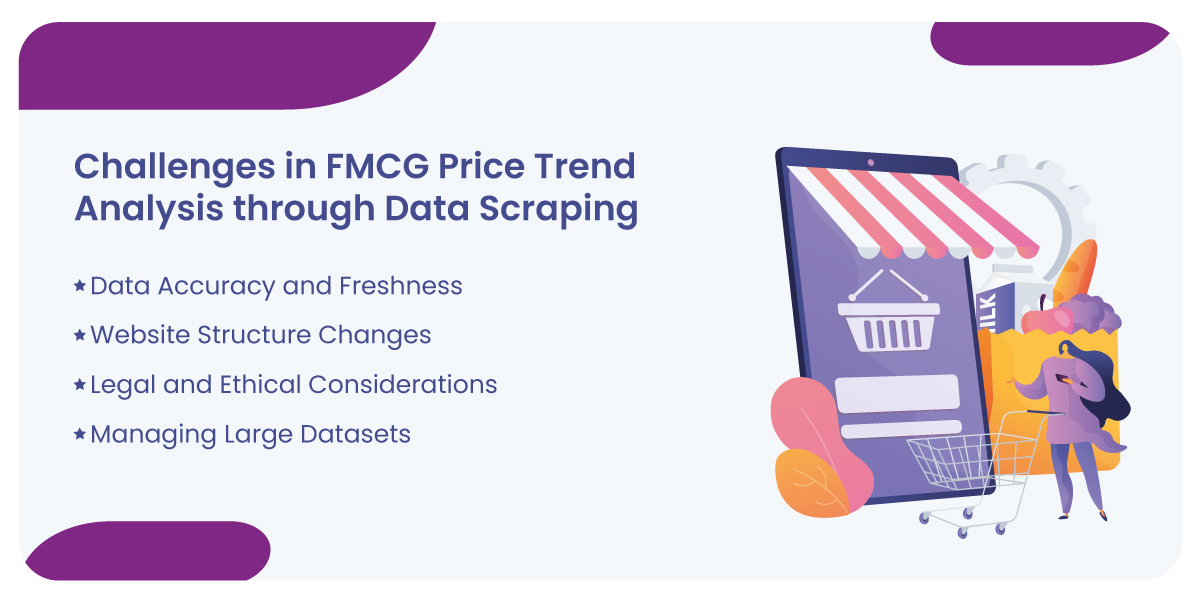
While data scraping provides valuable insights into FMCG price trends, several challenges must
be addressed to ensure accurate and practical analysis.
- Data Accuracy and Freshness: FMCG pricing data is highly volatile, with frequent updates due to discounts, supply chain disruptions, and demand fluctuations. Ensuring that the scraped data is accurate and up to date is crucial for making reliable business decisions. Companies must employ automated scraping techniques that retrieve data in real-time to maintain relevance.
- Website Structure Changes: Quick commerce platforms frequently update their website structures, which can disrupt data scraping processes. Businesses must continuously monitor and adapt their scraping algorithms to maintain seamless data extraction. Using AI-driven scraping tools can help mitigate the risks associated with website structure modifications.
- Legal and Ethical Considerations: Compliance with legal and ethical standards is essential when scraping FMCG price data. Some platforms impose restrictions on data extraction, requiring businesses to adhere to terms of service and privacy regulations. Implementing responsible scraping practices, such as using APIs where available and avoiding excessive server requests, ensures compliance with regulatory requirements.
- Managing Large Datasets: FMCG price scraping generates vast data, making data storage, processing, and analysis complex. Companies must invest in robust data management solutions to efficiently process and interpret large datasets. Cloud-based data storage, AI-driven analytics, and machine learning models can enhance the accuracy of insights derived from scraped data.
The Future of Quick Commerce Data Scraping for FMCG in Canada
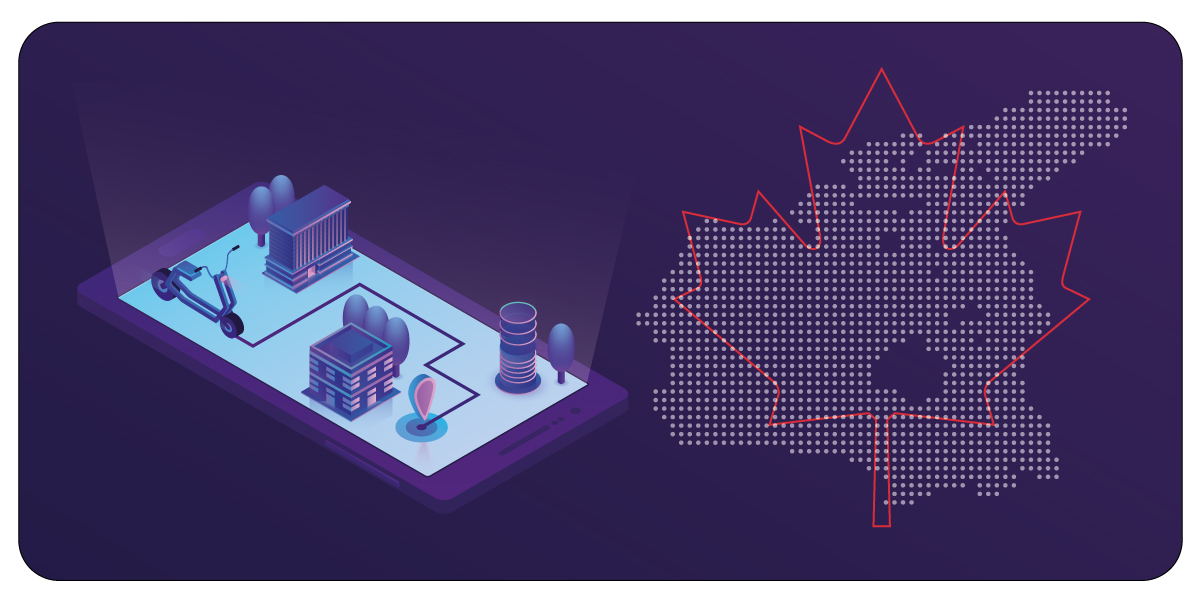
The landscape of quick commerce and FMCG price tracking in Canada is expected to evolve further with advancements in AI, machine learning, and automation. Here are some key trends shaping the future of data scraping for FMCG price analysis:
1. AI-Powered Price Prediction Models: AI and machine learning algorithms are revolutionizing price trend analysis by predicting future price movements based on historical data. Businesses can leverage predictive analytics to anticipate price changes, optimize inventory levels, and enhance profitability. This is particularly beneficial for web scraping grocery & gourmet food data, allowing companies to forecast demand and adjust pricing strategies accordingly.
2. Integration with Business Intelligence Tools: Data scraping will become more integrated with business intelligence (BI) tools, allowing companies to visualize and interpret pricing data more effectively. Advanced BI dashboards will provide real-time insights into pricing trends, enabling businesses to make more precise data-driven decisions. eCommerce dataset scraping will enhance BI capabilities by supplying accurate and structured pricing data for detailed analysis.
3. Enhanced Personalization and Consumer Insights: As businesses collect more granular data, they can offer personalized pricing and promotions to individual consumers. AI-driven algorithms can analyze consumer behavior and tailor pricing strategies to maximize customer engagement and loyalty. E-commerce data extraction will be essential in gathering detailed customer insights and refining targeted marketing efforts.
4. Regulatory Compliance and Ethical Scraping: With increasing concerns about data privacy and ethical web scraping, businesses will focus on developing scraping methodologies that align with legal frameworks. Companies will prioritize transparent data collection methods and seek partnerships with quick commerce platforms to access structured pricing data through authorized APIs. Ensuring compliance to extract grocery & gourmet food data processes will be crucial for maintaining trust and adhering to industry regulations.
5. Blockchain and Decentralized Pricing Data: Blockchain technology is expected to enhance data transparency and security. Decentralized pricing systems will allow businesses to access reliable price information while maintaining data integrity and preventing unauthorized data manipulation.
Why Leverage Product Data Scrape for Collecting Accurate Quick Commerce Data?
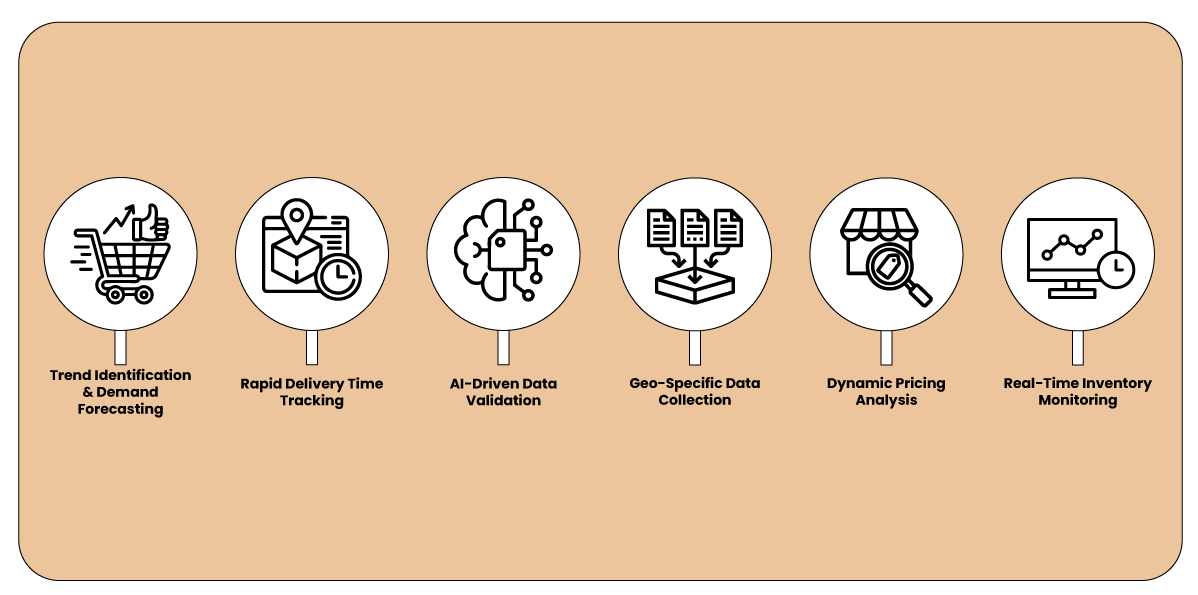
Product Data Scrape enhances quick commerce operations by providing accurate, real-time insights essential for inventory, pricing, and logistics optimization.
1. Real-Time Inventory Monitoring – Tracks stock levels across quick commerce platforms, ensuring up-to-date insights on product availability and shortages.
2. Dynamic Pricing Analysis – Extracts and compares real-time pricing fluctuations, helping businesses adjust pricing strategies for competitive advantage.
3. Geo-Specific Data Collection – Captures location-based product availability and pricing to optimize hyperlocal quick commerce operations.
4. AI-Driven Data Validation – Uses machine learning to filter inaccurate, duplicate, or inconsistent product data, ensuring high-quality datasets.
5. Rapid Delivery Time Tracking – Monitors estimated delivery times across platforms, helping businesses analyze logistics efficiency and customer experience.
6. Trend Identification & Demand Forecasting – Extracts purchase trends and seasonal demand patterns to help businesses stock the right products at the right time.
Conclusion
Quick commerce data scraping has emerged as a powerful tool for tracking FMCG price trends in Canada. With the rapid growth of online grocery delivery and on-demand retail services, businesses must leverage real-time pricing insights to remain competitive. Companies can optimize their pricing strategies by analyzing competitor pricing, promotional strategies, regional variations, and consumer demand and drive market success.
Despite challenges such as website structure changes, data accuracy concerns, and legal constraints, advancements in AI, predictive analytics, and ethical scraping practices are shaping the future of FMCG price monitoring. As technology evolves, businesses that invest in sophisticated data scraping techniques will gain a significant advantage in navigating the dynamic world of quick commerce and FMCG retail in Canada.
At Product Data Scrape, we strongly emphasize ethical practices across all our services, including Competitor Price Monitoring and Mobile App Data Scraping. Our commitment to transparency and integrity is at the heart of everything we do. With a global presence and a focus on personalized solutions, we aim to exceed client expectations and drive success in data analytics. Our dedication to ethical principles ensures that our operations are both responsible and effective.







